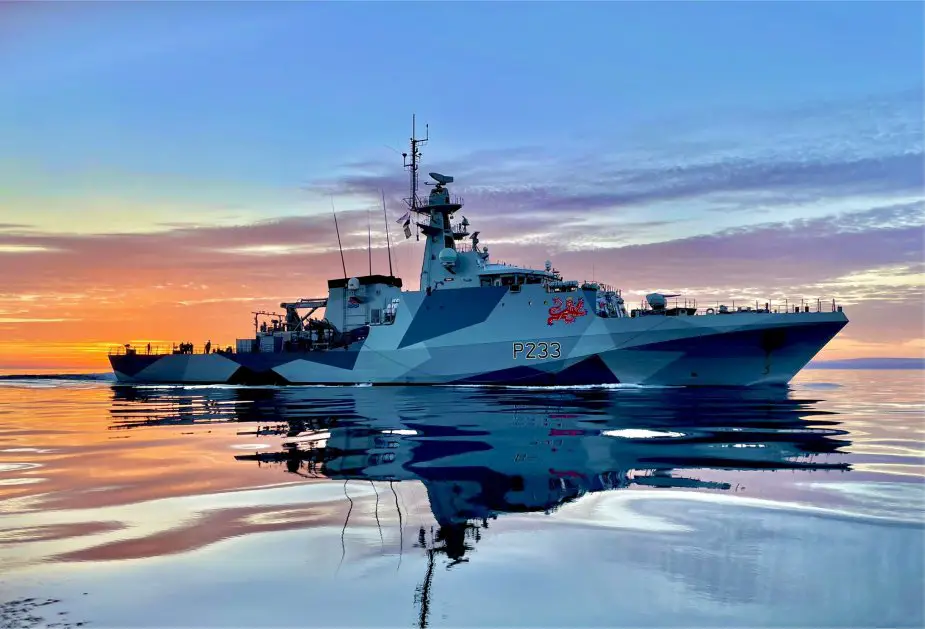Breaking news
UK: Royal Navy's OPV HMS Tamar makes port call in India.
According to information published by the UK government on January 6, 2023, the Royal Navy’s offshore patrol vessel, HMS Tamar, sails to the Andaman and Nicobar Islands as part of its permanent deployment in the Indo-Pacific.
Follow Navy Recognition on Google News at this link
 River class Offshore Patrol Vessel HMS Tamar. (Picture source: UK Foreign Office)
River class Offshore Patrol Vessel HMS Tamar. (Picture source: UK Foreign Office)
HMS Tamar is one of two Royal Navy vessels on permanent deployment in the Indo-Pacific as set out in the UK’s Integrated Review. The ship’s visit to India is an opportunity to further strengthen the shared maritime domain awareness effort, and underlines the UK’s and India’s intent to collaborate in the Indian Ocean Region and wider Indo-Pacific.
The HMS Tamar, a river class offshore patrol vessel of the Royal Navy, and sister ship HMS Spey are on a long term deployment in the Indo-Pacific since September 2021.
The Integrated Review published in March 2021 – setting out the UK’s foreign, defence, development and security policy – committed the UK to becoming the European country with the broadest, most integrated presence in the Indo-Pacific in support of trade, shared security and values.
The UK’s White Shipping Agreement with India enables information sharing across the whole of the Indian Ocean Region. In June 2021, the UK posted its first permanent liaison officer at the Indian Navy’s Information Fusion Centre for Indian Ocean Region (IFC-IOR) in Gurugram to enhance maritime domain awareness in the region.
About the HMS Tamar
The River class is a class of offshore patrol vessels built primarily for the Royal Navy of the United Kingdom.
The Batch 2 ships are fundamentally different in appearance and capabilities from the preceding Batch 1. Notable differences include the 90.5 metres (296 ft 11 in) long hull, a top speed of 25 knots (46 km/h; 29 mph), a flight deck that can take an AgustaWestland Merlin helicopter,a displacement of around 2,000 tonnes and greatly expanded capacity for accommodating troops.
The Batch 2 ships also have a different (full width) superstructure, and a fundamentally different above-water hullform shape (greater bow flare, different and less-pronounced forward knuckle line compared to the Batch 1 ships, lack of the distinctive forward and aft bulwarks of the Batch 1 vessels).
The class is also fitted with the Kelvin Hughes SharpEye integrated radar system for navigation, the Terma Scanter 4100 2D radar for air and surface surveillance, and a BAE CMS-1 "Combat Management System".




























